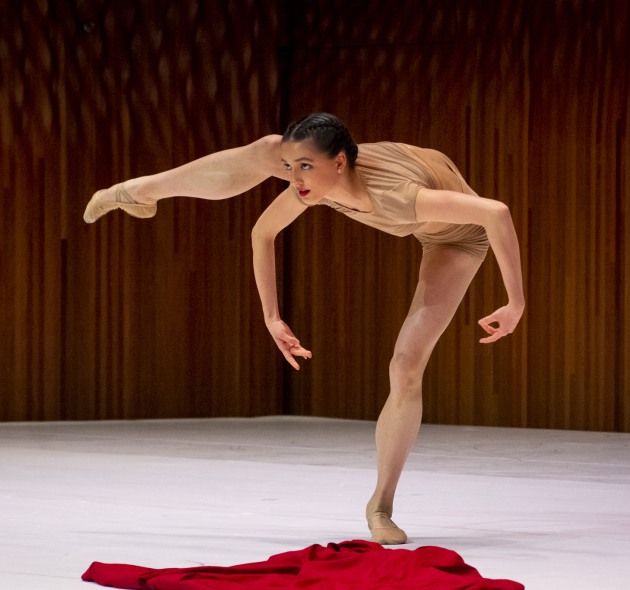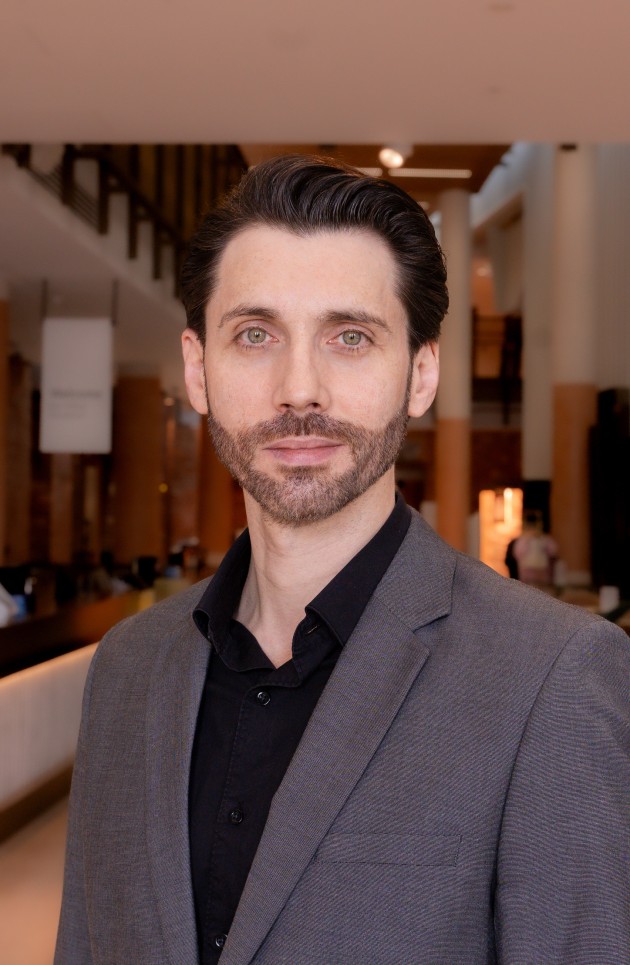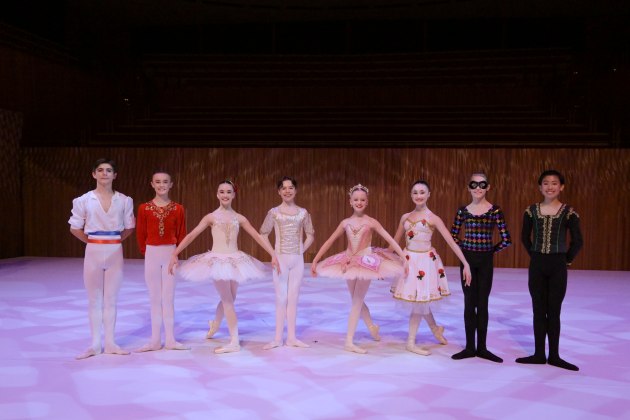Sydney Eisteddfod Scholarship: the drilldown

Australia's biggest ballet competition, the Sydney Eisteddfod Ballet Scholarship, took place at the Sydney Opera House. GERALDINE HIGGINSON gives a detailed account and talks to Christian Tatchev about the thinking behind the ajudicators' choices.
On Sunday July 21 the Sydney Eisteddfod Ballet Scholarship returned to the Sydney Opera House Concert Hall, but with some significant changes to its well-established format. These made for a stronger focus on a larger number of ballet students (16 in total) who each presented two solos (one classical and one free variation) on the night, but meant moving the large groups who vie for the Dance of Champions to a separate event held on Sunday September 8 at the Chatswood Concourse Theatre. Other changes include that the first and second prize winners of the Sydney Eisteddfod Ballet Scholarship are no longer required to be of opposing genders, and the move to make the selection of finalists closer to the actual finals event.
Elise Fowler, Digital and Operations Coordinator of Sydney Eisteddfod explained the reason for the changes:
“This year the decision was made to join the Robert & Elizabeth Albert Junior Classical Ballet Scholarship (14-15 years) and the Sydney Eisteddfod Senior Scholarship (16-19 years) to create one big celebration of classical ballet. Bringing the Junior dancers to the Opera House has been a dream of Sydney Eisteddfod's for many years and we felt this aligned with the vision of the Late Robert Albert AO and Elizabeth Albert.
"For the last two years the selection of the dancers was bought closer to the final to alleviate travel costs for dancers coming from interstate or New Zealand. Historically the heats and semi-finals were quite some time apart, meaning dancers would have to travel to and from Sydney on multiple occasions, this goes for the adjudicators as well. During the week leading up to the finals the dancers also had the opportunity to participate in more solo events and extra opportunities provided by Sydney Eisteddfod, including masterclasses and a Q&A.
"In terms of the gender of the winners, we wholeheartedly feel that the dancers should not be judged on their gender, but on their technical skill and performance.”

ABC journalist, editor and author Tracy Kirkland made an excellent compere for the evening and the 16 young finalists for the Junior and Senior Ballet Scholarship events demonstrated much talent. The event was livestreamed by the Australian Digital Concert Hall on the night (tickets to watch the recording were still available online at the time of writing this article).

First up were the solos – 34 of them in total, with the eight junior scholarship finalists dancing their classical variations first, followed by eight senior finalists’ classical variations. Then came the juniors’ free variations as well as an appearance by guest artist Jessica Fyfe, performing "Cinderella’s Ball Variation" from Christopher Hampson’s Cinderella. After a 20-minute interval, the remaining eight free variations by the senior finalists and another solo by Fyfe (a contemporary version of "Odette’s Variation" from David Dawson’s Swan Lake).
Fyfe is a Sydney Eisteddfod alumna who won the Robert & Elizabeth Albert Junior Classical Ballet Scholarship herself back in 2005. She is currently dancing with Scottish Ballet as a Principal Artist, and she was lovely to watch in the two solos selected - but from an audience perspective I would question the wisdom of programming another two solos from a guest artist into a program which is already quite heavy with solos. Perhaps in the future, two guest artists could perform a duet or two instead?
While there isn’t enough space in this article to mention every individual solo performance - amongst the Junior Finalists I was quite taken with 2nd prize winner Oscar Taggart’s Harlequinade Variation, Leni Howlett’s Restrung and Benjamin Groen’s Get to Work. Scarlett Weaver gave a highly polished performance of her Act I, Awakening of Flora variation, and Aspen Edwards, who exuded expressiveness in both her classical and free variations, really gave each role everything she had onstage. First prize winner Elih Egan moves so lightly and effortlessly, with a beautiful jump and an authentic, sometimes vulnerable quality onstage.
Of the senior finalists, second prize winner Tahlia Szumowski’s choice of the Vision Scene, Act II, Sleeping Beauty was a great showcase for her lyricism and grace, while Freya Wild’s Anew exuded vitality, spirit and youth. First prize winner Georgia Lorange (who was also a Ballet Scholarship finalist in the same event last year) delivered a polished performance of the lead variation, from Act II of Paquita, complete with luxuriant back bends, delicate port de bras and sparkling technique. By contrast, Georgia’s free variation Esurient felt darker and edgier than most. Ernesto Young (just halfway through his first year of full-time training at Alegria Dance Studios) showed enormous potential, while Charlie Carberry (who will move overseas in September to train at San Francisco Ballet School) displayed an appropriately princely bearing in his Siegfried, Act III, Swan Lake variation.

Speaking after the event, one of the adjudicators, Director of Queensland Ballet Academy Christian Tatchev said:
“As every year, the standard was mixed; we had some beautiful talent, some almost ready for the professions, others still developing. It is very difficult to assess young people, especially when we don’t fully understand their training schedule, for example, the method of training and the consistency. I enjoyed seeing all their work, but of course making a decision, when they are all still learning, was a challenging task.”
When asked what made the winners stand out, he added:
“It must be noted that the audience at the Finals does not see the entire assessment process. The panel was able to observe the dancers over a few days, see their variations performed in different environments, in the studio and stage, and also see their classwork. This profession requires a dancer who is able to demonstrate a good balance across all of these, technically and artistically, and the winners were able to show this consistency.”
In addition to the main prizes, a large number of short stay scholarships was awarded by the schools and/or companies connected to the adjudicators Stanton Welch OAM, Leanne Benjamin AM, OBE, Christian Tatchev, Slava Tutukin and Lynette Wills. These were to Houston Ballet Academy (HBA), Queensland Ballet/Academy (QB), Australian Ballet/School (AB) and Dortmund Ballet/School (DB). Curious about the growing number of short stay scholarship opportunities that are awarded to both junior and senior ballet scholarship finalists at high-level dance competitions like this, I asked Tatchev if he saw the awarding of these opportunities as part of the recruitment strategy for many professional companies and schools these days? And if he thinks it has arisen from the increasing popularity/expansion of the YAGP competition model?

“Yes and no," he replied. "Our main goal is to acknowledge the hard work of the dancers and their teachers. Many may not take the opportunity, but the offer would serve as recognition and encouragement to them, which I feel is important. I cannot speak for other organisations, but Queensland Ballet Academy has a strict anti-‘poaching’ policy. We will not approach a student, unless they, the parent or guardian, starts the conversation first. So, they are welcome to visit us, experience what we do and our training methodology, and enjoy our beautiful new spaces, and there is no obligation following this at all. If we happen to be a good fit after that, we will welcome the conversation, of course, but it will need to be initiated from their end first.”
The final work in the Sydney Eisteddfod Ballet Gala program, Vaije de Sueños (Journey of Dreams) was choreographed especially for this gala event by Xanthe Geeves to an original composition by composer and musician Daniel Rojas. This work was performed live onstage by 40 dancers from the Australian Youth Ballet with Rojas on piano alongside the inaugural Sydney Eisteddfod String Quartet. At approximately 14 minutes in length, this spirited neo-classical work was well performed by a cast which looked confident and well-rehearsed. I liked the way each section overlaid the next and especially enjoyed the effervescent three-minute finale. Being able to see the choreographic possibilities of multiple bodies onstage being deftly and eloquently explored really rounded off the program in a positive and uplifting way.
This year’s winner of Capezio’s Most Promising Young Dancer Award for 2024 was announced as Lewis Nicholson. History shows him to be in good company, with 2022’s winner of this Award, Pelagia Karakontis, returning to the Concert Hall this year as a Sydney Eisteddfod Ballet Scholarship Finalist and delivering a mature and expressive performance of her free variation Find Me to a rapt audience.

1st Prize – Georgia Lorange (Tamborine Mountain Dance Academy, QLD)
2nd Prize – Tahlia Szumowski (Qld College of Dance/Promenade Dance Studio, QLD)
Tanya Pearson Memorial Award – Lila McGrath (Classical Coaching Australia, QLD)
Christine Walsh’s Ballet Conservatoire Training Award – Freya Wild (Alegria Dance Studios and L'Academie, NSW)
As first prize winner Georgia receives $18,000 ($3,000 cash plus a $15,000 Scholarship). As second prize winner Tahlia receives $10,000 ($2,000 cash plus and $8,000 Scholarship.
SHORT-STAY SCHOLARSHIP OFFERS
Georgia Lorange (Tambourine Mountain Dance Academy, QLD) – HBA, QB, AB
Tahlia Szumowski (Qld College of Dance/Promenade Dance Studio, QLD) – HBA, DB
Nicholas Chan (Tanya Pearson Academy, NSW) – HBA, QB, AB
Ernesto Young (Alegria Dance Studios, NSW) – HBA, QB, AB
Charlie Carberry (Dance North Academy, NSW) – QB
Pelagia Karakontis (The Dance Spot, NSW) – QB
ROBERT AND ELIZABETH BALLET SCHOLARSHIP RESULTS
1st Prize – Elih Egan (Stockton's Bella Ballerinas, NSW)
2nd Prize – Oscar Taggart (Alegria Dance Studios, NSW)
As first prize winner Elih received $7000 ($1000 cash plus a $6000 Scholarship). As second prize winner Oscar received $1500.
SHORT-STAY SCHOLARSHIP OFFERS
Elih Egan (Stockton's Bella Ballerinas, NSW) – HBA, AB
Oscar Taggart (Alegria Dance Studios, NSW) – HBA, AB
Leni Howlett (Kerry Moore School of Ballet, VIC) – HBA, AB
Ryan Keo (National College of Dance, NSW) – HBA, QB, AB
Scarlett Weaver (Dance North Academy, NSW) – AB, QB
Charlie Duwner (Newcastle Dance Academy, NSW) – HBA, AB
Aspen Edwards (Expressions Ballet Academy, VIC) – QB
Benjamin Groen (Papilio Atelier, Auckland, NZ) – HBA

For more, go here.


